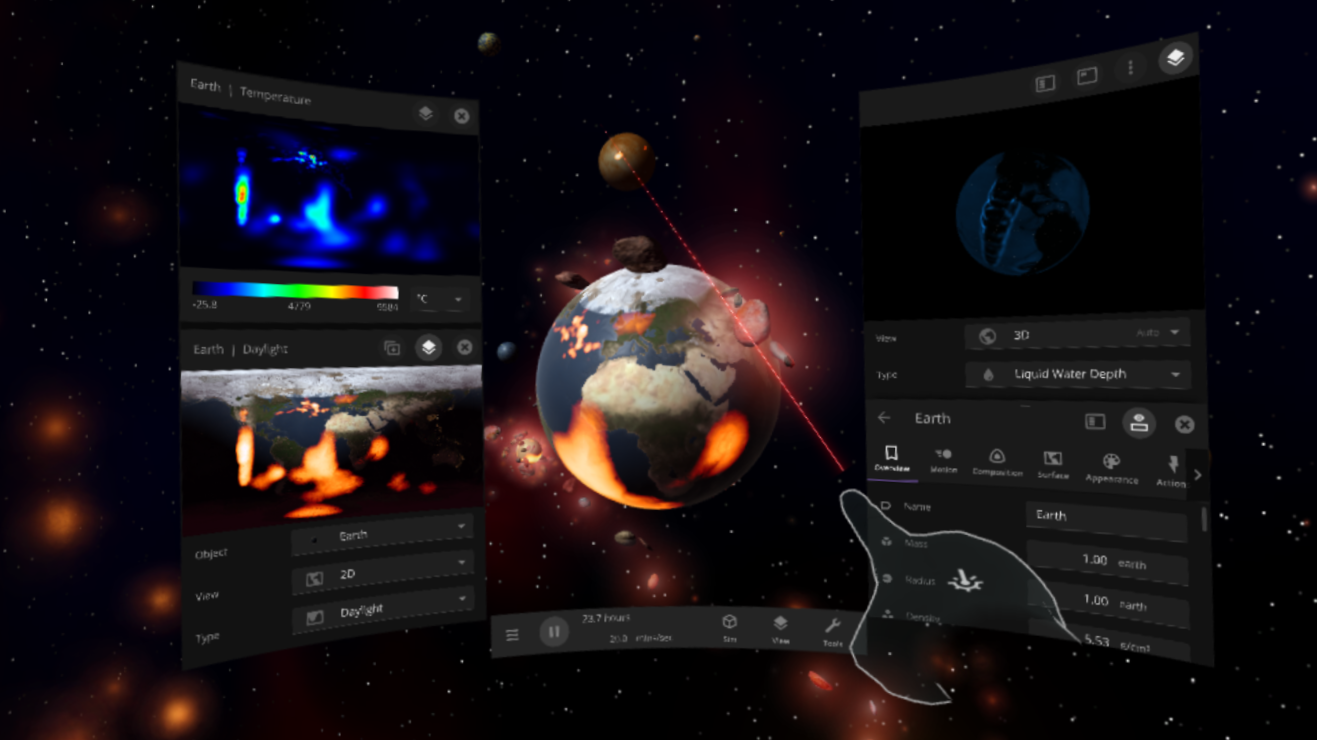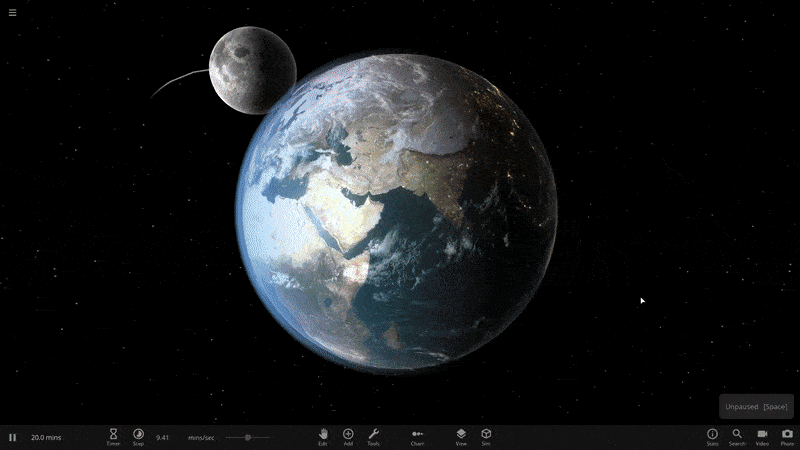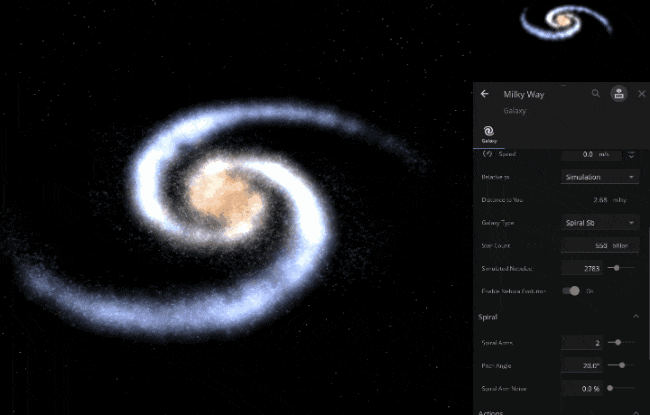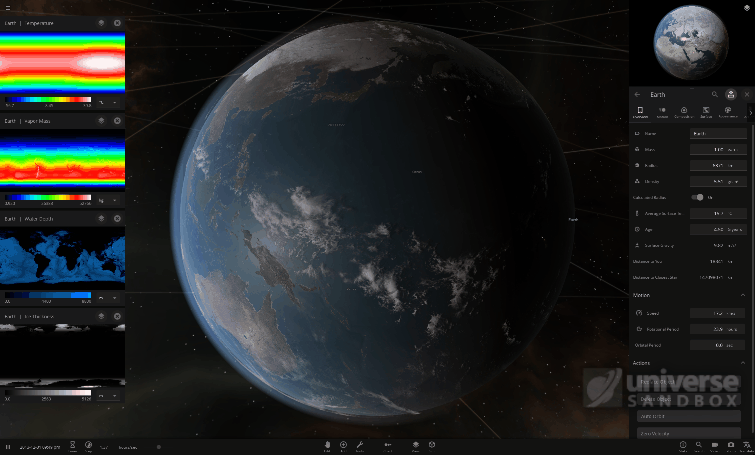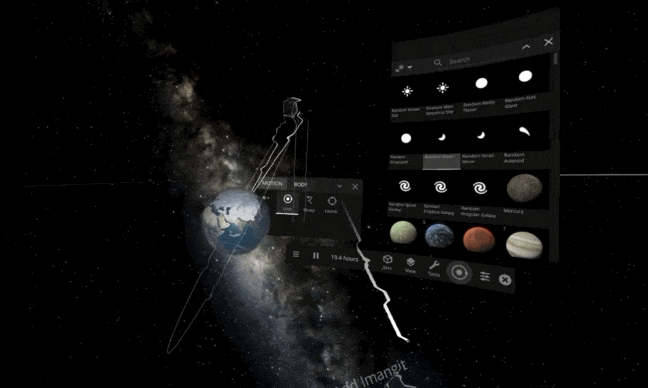
Feb 24, 2021
Universe Sandbox - SpartanSheep
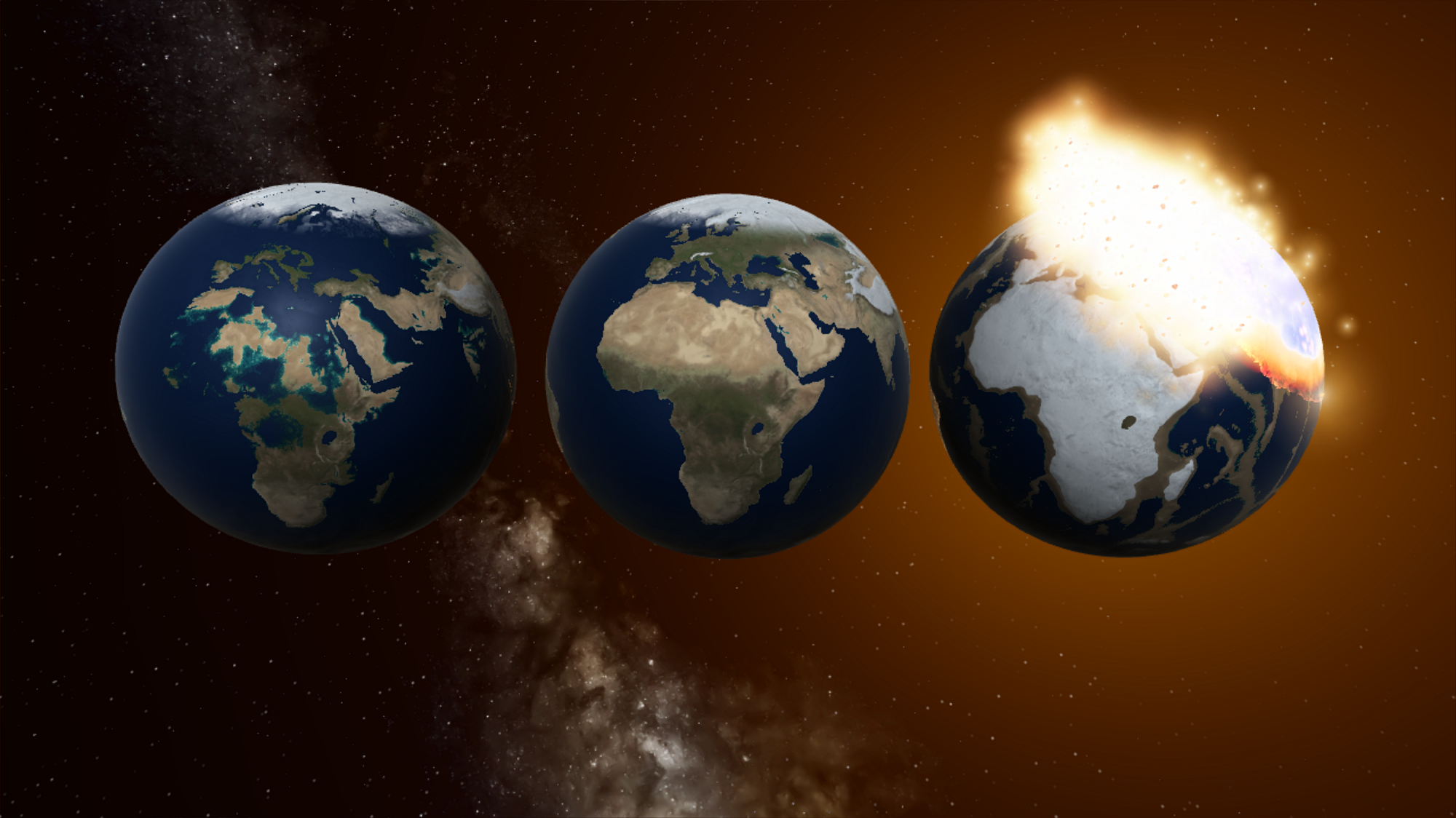
Drastically increased collision fragments and framerates, overhauled planetary water distribution, plus dozens of improvements come together in Update 26.3.
Oceans Filling Like a Bathtub
Water fills a tub from its lowest point - why not on a planet? Oceans now start at the lowest elevations and fill valleys like you would a bathtub, creating more realistic-looking continents and oceans. (Previously liquid water would “precipitate” evenly across the surface.)Buttery Smooth Collisions & Particles Aplenty
Major performance improvements have resulted in epic collisions with double the particles. Fragment generation is substantially more consistent across various simulation speeds. Collisions now perform much more smoothly: in many cases we’re seeing as much as triple framerate increases.More Highlights
- Fixed the “annoying bug” that darkened customized planet surfaces
- Ice & Snow, which are simulated separately, now have color options
- Avast, Matey! Change an object’s Sea Level in the properties panel
- Cleaned up the object property panel and added new action buttons
Simulation
New
- “Stabilize Temperature” and “Stabilize Phase” are two new surface simulation functions in an object’s Property panel. Instantly set the temperature of the surface or the phase of the water (gas, liquid, or solid ice) to their steady state. This is useful to see how a planet will settle over time, rather than needing to speed up time.
- Added an editable “Sea Level” property to an object’s Surface tab. Use this to raise or lower the water level on an object’s surface by “filling up” the oceans from the bottom up. This is a much more intuitive and engaging way to add water to an object’s surface than was previously possible. Previously, water was added as a uniform sheet across the entire surface.
- Added a toggleable “Fusion Power” to the Simulation Settings
Improvements
- Major performance and optimization improvements to surface simulation, collision heating, n-body calculations, and fragmentation. Collisions in particular perform much more smoothly than before.
- Improved the consistency of fragment generation during collisions at a variety of simulation speeds.
- Light energy is now correctly conserved when scattering off the surface of objects, resulting in more realistic, less shiny surfaces.
- Improved the simulation of light absorption in water, yielding darker deep water and greener shallow water
- Revised default water color to be a more saturated blue, reflecting how satellite photos of Earth are often represented
- Improved the water generation on random rocky planets, resulting in more planets with defined continents and oceans
- Added relativistic kinetic energy to collision calculations. Only relevant at speeds near the speed of light
- Revised the initial size of Earth’s ice caps
Fixes
- Fixed an issue where many fragments created during a collision would immediately re-collide with the colliding object. This now results in much higher particle count in the aftermath of collisions.
- Fixed an issue that was causing a error in momentum transfer during collisions
- Fixed in issue where newly created objects could adopt surface elevation information from other objects
- Laser previously affected an area slightly larger than the intended size. Now the laser affects the correct area size, as designated by the visual laser tool reticle.
- Venus will no longer produce volatiles after opening "Planets Between Earth & Moon" sim
- Fixed an issue where objects could be heated prior to being added to the simulation
- Fixed an issue where objects could still lose mass to fragmentation with “Create Fragments” turned off
- Fixed an issue where the heated area on an object’s surface after a collision would jump to a different size
- Fixed an issue that was causing exoplanets to generate with too much water
- Fragments that were spawning slightly oversized are now corrected
User Experience
New
- New styling of many action buttons in an object’s Property panel
Improvements
- Major improvements to saving. This should reduce the occurrence of corrupted save data, and overall improve the stability of saving and loading simulations.
- Zooming on surface data maps now zooms at the cursor’s position
- Snow is now correctly visually represented on top of ice
- The distance at which Surface Lock enables when moving close to an object has been revised
- Improved object selection logic, preventing the selection of mostly-invisible gas clouds when they are too close to the camera
- Improved the colorization of objects when using non-realistic Color modes
- Improved the visibility of the Laser tool reticle, and added a missing reticle on gas giants
- Improved color rendering of heated gas giants
- Revised styling of expanders in the Property panel
- Revised styling of the scrollbar on surface data views
- Reorganization of the Property panel Overview and Surface tab
- Reorganization of tabs in the Open panel, notably moving My Sims to the front
- Habitable zone visibility can now be toggled by the hotkey H, which is editable in the keybinds.
- Removed the English-only abbreviations from non-English languages that could sometimes cause awkward translations. Cleaned up the abbreviations used in English.
Fixes
- Fixed the behavior of “Auto” selection in dropdown menus with auto-selecting options. “Auto” can now be correctly toggled on and off.
- Fixed an issue where atmospheres and clouds would be incorrectly tinted darker when customizing the underlying surface colors
- Fixed the sorting behavior for simulations in the Open panel
- Toggle buttons added to the hotbar will no longer incorrectly switch state when loading a new simulation
- Particles now move smoothly when exiting Chart mode
- Fixed an issue where an unplaced object hologram could be selectable
- Atlas Resolution now correctly resets to default when all settings are reset
- Fixed an issue where an empty sim would report having 1 object in the Stats panel
- Fixed an issue where Slowest Body wouldn’t be reported correctly in Simulation Settings
- Fixed an issue where it would be possible for the mouse wheel to zoom in Universe Sandbox while using the mouse in a different application
- Fixed an issue preventing Surface Lock from working during a guide
- Fixed an issue where the strongest attractor in a simulation could be given an orbit parent (26.3.1)
Content
New
- The color of ice and snow can now be customized in an object’s Appearance tab
Improvements
- Revision to Collision simulations to ensure the impact collision consistency across various simulation speeds






